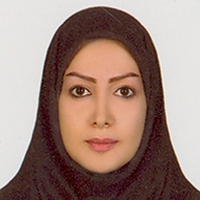Phytoremediation and Estimation of Optimal Clean up Time of Lead Contaminated Soils Using< Portulaca oleracea L.> and
Author(s):
Article Type:
Research/Original Article (دارای رتبه معتبر)
Abstract:
Heavy metals are one of the most important environmental contaminants, particularly in soil and water sources. Among heavy metals, lead is one of the most challenging toxic contaminants. Using lead-contaminated soils requires their decontamination and improvement. The objective of this study was to investigate the possibility of lead decontamination from soil and to estimate the optimal clean up time using Portulaca oleracea L. and Amaranthus retroflexus. For this purpose, a completely randomized design with five treatments of 30 (standard), 150, 300, 600 and 1200 mg/kg each with three replicates was performed. The results indicated that for both plants a non-linear positive relation exists between the lead concentrations in soil and that accumulated in plant roots and shoots. The highest extracted lead which was accumulated in roots of Portulaca oleracea L. and Amaranthus retroflexus were 173.39 and 149.76 mg/kg, and in their shoots were 20.01 and 5.82 mg/kg, respectively. Translocation factor was obtained from 0.62 to 0.12 for Portulaca oleracea L. and from 0.14 to 0.04 for Amaranthus retroflexus. The translocation factor in both plants was obtained to be less than one, indicating poor lead transfer from root to the shoot. Due to the ability of the above plants to absorb large amounts of lead from the root zone, high plant yield and the ability to accumulate lead in harvestable organs, both plants were highly effective for remediation of lead from soil surface up to concentrations several times of the allowable lead concentration. However, due to the clean-up time and the amount of biomass produced, the Amaranthus retroflexus had a better ability to remediate contaminated soils.
Keywords:
Language:
Persian
Published:
Journal of Environment and Water Engineering, Volume:7 Issue: 1, 2021
Pages:
25 to 37
https://www.magiran.com/p2232615
سامانه نویسندگان
مقالات دیگری از این نویسنده (گان)
-
Modeling the impact of salinity stress on yield of hybrid and improved varieties of rice during different growth stages
Razieh Tolouinasab, Kapourchal *, Hasan Ramezanpour, Mojtaba Rezaei
A Quarterly Journal Cereal Research, -
Simulation of Water Productivity Indices Using SWAP Agrohydrological Model and Comparison with Field Conditions in Paddy Soil
Adineh Abdi, Kapourchal *, Majid Vazifedoust, Mojtaba Rezaei
Irrigation & Water Engineering,



